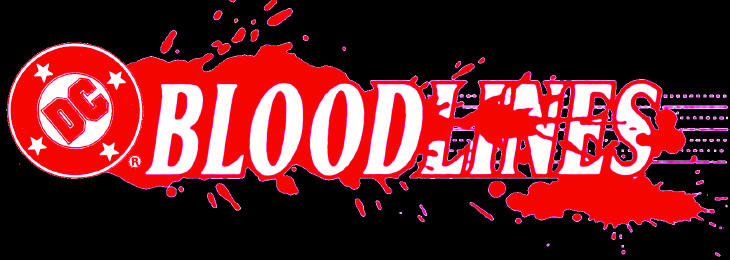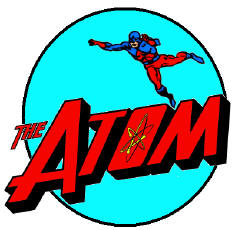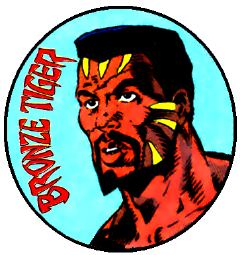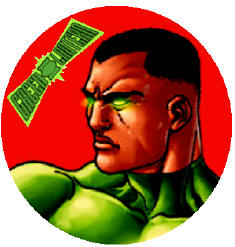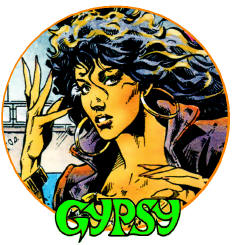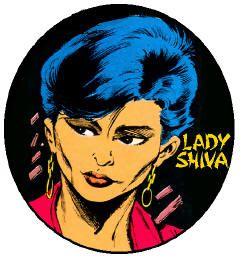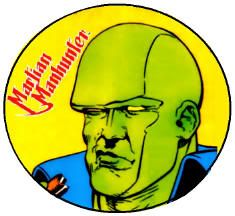As I've probably mentioned in the past, but just to recap, I manage to evade John Byrne's Fantastic Four better than most in my generation. I remember seeing the Diablo cover with the FF as candlesticks and thinking that looked cool. I think I tossed through the triple-sized 20th anniversary issue. I believe the sideways issue was at a barber shop that I went to, and the same may have been true of The Masque of Doom photo cover. I of course got the She-Hulk papped topless issue, and one of the "Dark Sue" Malice issues. Ultimately though, I preferred She-Hulk as an Avenger, and I bought more Thing solo comics than FF ones up to this point. I think I got Fantastic Four #293 out of a 3-pack with something else I wanted more, but at least it was another She-Hulk cover. Her, I liked. The Storm-Richards Family, never. Reed was like a pedantic high school science teacher, Sue like a wallpaper Kindergarten teacher, and Johnny felt like a pretty boy bully somewhere in between. I was so invested in the Fantastic Four that I struggled to figure out how it related to the movie Fantastic Voyage. The shrinking one with Raquel Welch, not the Sinbad one. I was ignorant, not an imbecile. The 1967 Hanna-Barbara cartoon ran really early in the morning, and the 1978 one with H.E.R.B.I.E. was too lame and short lived to rate much attention from me. As you've probably noticed, I was quite the Marvel Zombie at this point, and the FF felt like a DC team in the most pejorative sense. You had the one crazy kid in the padded cell screaming that he was Dr. Doom, and then most of the issue was doing science stuff in the desert to a big ink blob. Toward the end, the team get sucked into some future state where the original FF were worshiped as gods, which felt very Mort Weisinger before I knew what that meant.
Thor was another one of those old-timey Kirby-type books that did not appeal to me. I tossed through the one with Dracula as a back issue. The Walt Simonson stuff had a great sense of power to it, and I did eye that first Beta Ray Bill cover and his continuing adventures, the frog stuff, and that one killer spread from a Marvel Age annual where the Asgardians were using conventional assault weapons. Nothing ever sealed the deal though, and quite randomly, I dipped in on a fill-in. I don't recall if I bought The Mighty Thor #370 on purpose or out of three-pack, quite probably the same one as the Fantastic Four. I wonder what the third book would have been-- maybe an Uncanny X-Men? Anyway, it had a nice inventory pin-up cover by Big John Buscema, but the interiors were inked by P. Craig Russell, for a very contrasting look. Both Thor and FF had gorgeous John Workman lettering, which couldn't have hurt. The story was a western titled "Easy Money," and was written by Jim Owsley, the future Christopher Priest. It was about a wannabe Bat Lash style card sharp who has a run-in with a Lee Van Cleef type with a band of murderous outlaws planning a train robbery. If you say that sounds like a typical Thor story, that's exactly why I liked it, as it had a bit of a Highlander vibe, but in the Weird West. To say more would spoil it, but despite spending years in obscurity, it seems to have reappraised and lauded over the years, recently added as a bonus story in the final Black Panther by Christopher Priest Omnibus that sits on my bookshelf.
I'm pretty sure that my brother bought The All New, All Daring Peter Parker, The Spectacular Spider-Man 117. The cover featuring Black Cat battling Dr. Strange is very familiar. It was another "Missing in Action" tie-in with a blink & you'll miss it Sabretooth cameo. Also, the last page with a woman drinking coffee in the mountains near Spidey's shredded costume, unquestionably by a different art team than the main story, is a solid memory for me. However, the actual story by Rich Buckler and a young Dwayne Turner, wherein they give Black Cat her equivalent of Dinah Lance's jazzercise outfit, drains all the energy out of me just by looking at it. I never read this thing.
Weirdly, Louise Jones is credited as writing X-Factor #7, even though she was Simonson last issue and Walt will be penciling the title in a few months. I bring this up mostly because the actual issue offers nothing of interest. This is the one with the big bald guy and the slug guy. Also, this was during that period where the team wore uniforms and pretended to be Ghostbusters but mutants, while also wearing their X-Factor costumes and supporting mutants. But both these groups have five members with distinct body types, only one girl who's a redhead on both teams, and one guy who wears red glasses per team. Who fell for this?
I don't recall if I ever bought the two-issue, double-length Lois Lane mini-series by Mindy Newell and Gray Morrow. I just know that it haunted the quarter bin at Marauder Books in 1989, and that wasn't the only shop I could say that about. Even if I did finally pick it up to own, I've yet to read it. And hey, while I'm shouting out Marauder's clearance bins, let me also mention other frequent detritus like Independent Comics' The Epsilon Wave, Mr. Monster's Hi-Octane Horror #2, Nervous Rex, various issues of Eclipse's New Wave, Blackthorne's Pre-Teen Dirty-Gene Kung-Fu Kangaroos #1, Elite's SeaDragon, Aircel's Stark Future #1, and Ocean Comics' Street Fighter. I often use the Champions RPG as a shorthand for uninspired, plainly derivative, fannish junk characters in pedestrian stories by anonymous journeymen and never-wases. This is in part because I fished Eclipse's adaptation, Champions #1, out of these bins, and it was the platonic ideal of basicness. It made the New Universe look like Watchmen by comparison.
Lil' bro might have had a copy of Star Comics' Masters of the Universe #3. He definitely had figures of Orko, Battlecat, Prince Adam, and probably the cover-featured Slime Pit. He was a prolific collector, who owned most of the 1985 and 1986 figures. Just at a glance, I recognize Moss Man (a repurposed Beast Man,) Roboto with the transparent chest that let you see his gears, Sy-Klone, Two Bad with two heads and a pair of action-swinging arms, Stinkor, Spikor, Leech with the suction cups, Mantenna with the bug-out eye-stalks, Modulok with two heads and six insect legs, Extendar with techno-expanding neck and appendages, Rio Blast-- who looked like a redneck crossover with the C.O.P.S. line, King Hiss-- who was made out of snakes inside a removable human suit, and some of the stupid Transformer guys that turned into rocks. He also had a number of vehicles, but I didn't care as much about those. Battle Bones sticks out though, because it was a dinosaur skeleton with hooped ribs that doubled as a carrier for a bunch of figures. We both had color variations on Hordak and Grizzlor, mine with the lighter brown fur and his near-black. The Horde Trooper was featured in this comic, and at first I though he had one, but now that I look, I'm not so sure. All this is to say that the comic looked like kids' stuff, so I skipped reading it.
If there's one thing I'd rather not have to write up in one month, it's Son of Ambush Bug, and yet here we're back for more or less a third helping. I do have angles though. DC Comics fans talk a lot about the impact of Crisis on Infinite Earths, and particulars like how Roy Thomas got hosed by losing access the Golden Age heroes amidst the obliteration of Earth-2 from continuity. But what about Julius Schwartz?
After Mort Weisinger lost his editorship over Superman, his life spiraled, and he was destitute when he died. Nothing so dramatic happened with Julie, but after line of DC Science Fiction Graphic Novels adaptations floundered in 1985, and with the massive editorial overhauls of 1986, Schwartz was more or less shown the door. He would continue as a sort of goodwill ambassador for DC Comics along the lines of Stan Lee, with some sort of stipend involved, but as a powerful figure, the man was done. And in this very issue of Ambush Bug was an ad for the Man of Steel mini-series, with Andrew Helfer as the new overseer of the Superman line, and John Byrne the primary creative force who was intentionally erasing much of the body of work Schwartz had commissioned for that character since the 1960s. It's hard not to see the largely plotless excesses of Son of Ambush Bug as a sort of primal scream of rage and quiet whimper of futility at the injustice of its creative team's straits. Everyone involved was losing "their" DC, and probably their financial welfare, and also having their memories and legacies scrubbed before their eyes.
The book goes to dark places, as when a secret government operation tries to use the Ambush Bug suits left on his many corpses to develop agents who could teleport, only to learn the suits were literally devouring their wearers. Or how the tossed-off gag of an Ambush bug-fronted super-team from the first mini-series was now seeing its underdeveloped membership committing suicide. And that's before they die a terrible running gag about iguanas into the bombing of Hiroshima. But again, I found this madness engrossing, trying to figure out mysteries about what I'd miss that were never meant to even be considered, much less solved. In retrospect, everyone was just filling pages, and there's a genuine underlying anger to the anti-humor.
I've heard that Giffen would often just draw random things and hand off the pages to scripter Robert Loren Fleming to figure out what to do with, not offering any notes or suggestions. I tend to think that's why this mini-series is amused with itself, but not actually directing any sincere humor toward an audience. It's all a hostile meta in-joke, with the embodiment of capricious editorial feat in the cosmic villain The Interferer turning the creatives into his whipping boys. And yet, I adored the art, the constant breaking of the fourth wall, the jokes lobbed by and against the various named members of the creative team. Schwartz is clearly absentee, but he gets his turn. For instance, the issue is sandwiched between splash pages of a barely clothed airhead bimbo who hosts the comic, and in the end is left in the clutches of Schwartz, which reads a lot different after Colleen Doran's accusations that Schwartz was a sex pest. I have no doubt that Giffen's jab at Jules were affectionate, but even here, there's a grim undercurrent.
Web of Spider-Man #18 was I think the last part of "Missing in Action," and it was about how anyone who thought that scraps of Spidey's costume lying around after a battle meant that he was dead was a dummy. Like, Web-Head pioneered torn costumes. So he was running around, beat up and half naked, doing a reenactment of a Macon County Line or Born Innocent or one of those other movies where regular folk are railroaded into prison by crooked southern authorities. Anyway, Peter eventually got loose and hitchhiked home. There's also a teaser for the arrival of Venom. This was another of my bro's books. Easily the most interesting thing was Kyle Baker inking Marc Silvestri.
West Coast Avengers #12 was I think another bro-chase, which I recall mostly for the debut of Wonder Man's red & green costume, which I still thinking is among the most hideous suits ever worn by a mainstream hero. I think JLGL drew it for OHOTMU, and if he couldn't salvage it, nobody could. Speaking of OHOTMU, there's a trio of new villains introduced, and ZZZAX with three z's will perpetually be thed last entry in future volumes. Quantum was trying to compete with Wonder Man's couture, so the only one to catch my eye was Halflife, a blue-skinned zombie hooker almost certainly inspired by Linnea Quigley's character from Return of the Living Dead. The final splash featured Graviton, who I took to be a low rent Magneto, and have yet to be disabused of that notion in 38 years. The blue & white suit looks good, though.
Sunday, April 28, 2024
Saturday, April 27, 2024
Comic Reader Résumé: Early May, 1986
Greetings gills and ghouls, it's that time again for the hostess with the mostest, in Elvira's House of Mystery #6. Under another great Mark Beachum cover with a fairly solid likeness that enthusiastically incorporates Elvira's plunging neckline is a slightly frustrating conceit. This issue is meant to be read sideways, spine up. On the plus side, that means nearly twice as much story this issue. On the down side, each page features two standard story pages, squished to fit with a big gap in the middle, and it's pretty good art done this disservice.
Tom Grindberg and Jim Fern mind Elvira's assets in the introduction that segues into the yarn "A New York Yankee in King Arthur's Court!" with the Bierbaums. It's clear Tom and Mary are fans, and produced this one specifically for this magazine, because Elvira continues to break in throughout the tale to narrate and quip. Grindberg is very much in Neal Adams mode as a baseball player wrestles with Medieval Times, and Elvira's dress wrestles with her curvy figure.
Next is "Subject for Post-Mortem" by Robert Kanigher and George Freeman, where a grave robbing physician ends up on the wrong end of the scalpel. "Two-Edged Sword" by Elizabeth M. Smith, Charles Nicholas, and Joe Giella comes across a bit hoary, especially when the last panel offers an Elvira that looks more like the Mark Beachum interstitial pages, and could easily have once been a Cain corner instead. Heck, there's even a painting of Cain on the next panel following, as if nodding to a paste-in.
The conquistadors of Kanigher & Jess Jodloman "You'll Beg to Die!" meet a grisly fate in another Adams-indebted piece, though this one with additional Filipino flair. Again, the pasted-in Beachum Elvira in the last panel gives up the game of this being a converted inventory story from some previously canceled horror anthology. There's no room for that contrivance in Joey Cavalieri & Ric Estrada's "Just Like Clockwork," which looks like it was drawn in the same time as the Kubrick flick they're referencing. The style and fashions would have been outdated a decade earlier, so I have to assume Cavalieri just scripted pages that had never made it to the lettering stage.
But just so you don't forget who's running this show, Beachum comes back for one more va-va-va-voom pin-up. Hopefully someday any rights issues can be untangled to reprint his pages in proper scale, hopefully while Elvira's still around to sign it. Oh, and her fan club springs for an ad, offering an autographed 8x10, bumper sticker and more for just $6.50 plus postage. The high contrast Xeroxed photos only add to the resemblance in the Grindberg & Beachum pages. The next issue had four pages of new interstitials to make up for the rest obviously being repurposed inventory from one of the axed science fiction anthologies, and even with a Bill Sienkiewicz cover, I couldn't see my way to supporting that one. My half-brother splurged on the double-sized $1.25 G.I. Joe a Real American Hero #50. The Rod Whigham-drawn lead story was "The Battle of Springfield," bringing to a head a long simmering subplot about an entire suburb having been taken over by Cobra infiltrators. This one was packed with memorable moments, like the spies burning documents in the fireplace as tanks roll down main street, or a dad preparing to shoot the family dog in front of his kids before evacuating. Serpentor was still cool at this point, topless in jeans adorned only by the king cobra cowl and a cape. He lustily plunges into the fray, and when shot, cauterizes the wound with a heated knife. Storm Shadow is resurrected in a chemical vat, and is none to happy about it. Then there's a preview story for the upcoming spin-off G.I. Joe Special Missions, with returning original artist Herb Trimpe. He was previously assimilated by Bob McLeod, but here he inks himself, taking a cue from Tony Salmons and Kyle Baker with a loose, sketchier, more contemporary style. This one has a lot of grit, with the Joes facing airplane hijackers, without shying away from the violence of such a terroristic act. I think this was the first story I ever encountered to feature tasers. Good stuff! To my mind, a cover with a mass of heroes carrying the massive form of an unconscious Hulk is a lot more memorable than another brawl, but as it happens, The Incredible Hulk #322 is mostly an exceptionally brutal slugfest. It fulfills the promise of recent, lackluster issues, even if I'll never get used to Dell Barras embellishing Al Milgrom. I don't think Marvel Age was ever on the newsstand, but my half-brother had access to a comic shop, and would sometimes pick it up for a pair of quarters. #41 offered a fumetti cover of Stan Lee, but was otherwise a lackluster issue. I did get use out of "The Marvel Age," a serialized text feature on Marvel Comics history that filled in the gap between Marvel Saga and my '80s purchases, this month covering 1972 in first installment. The Marvel Saga, the Official History of the Marvel Universe #9 downgrades the new Angel origin story pages from Sienkiewicz to Steve Geiger, which is not helpful. The Keith Pollard cover offering the initial Spider-Man/Doctor Octopus battle doesn't much salve that wound. There's also a lot of Vulture, Kree, and Red Ghost material here. The book is moving closer to a capsule index over the more narrative synopses of previous issues, so Puppet Master and Radioactive Man only rate a panel each. The Wasp gets a few pages, but it's hard not to notice the disproportionate space afforded Spider-Man stories involving losers like the Tinkerer. Sometimes it feels like the book wants to be Marvel Tales instead of Marvel Saga. And now, a brief review of my history with Keith Giffen to date: I had one of the Flash issue with a Giffen Dr. Fate back-up, from when he still drew a little like George Perez. Ditto his two page advertainment piece from the first 1983 DC Sampler. I was also drawn to house ads for The Omega Men and the Baxter format Legion relaunch, though between the two, Giffen's style had changed so much as to be nigh unrecognizable from one to the other. Sometime around 1983, Giffen was exposed to the Argentine artist Jose Munoz, known for a loose, high contrast style somewhat like what Steranko had used on Chandler and Miller would use on Sin City. This exposure effectively broke and rebuilt Giffen, who locked himself in a room for days, just studying every panel of Munoz. Afterwords, his approach to art was forever change, to the point where outlets like The Comics Journal accused Giffen on plagiarism, but he always swore that he never had a Munoz page on his table when he was drawing. You know how Brad Pitt used to adopt the fashion style of every woman that he was in a relationship with? Giffen was like that with artists, beginning with Jack Kirby, and going through periods of heavy Kevin Maguire and Simon Bisley influence after having worked with them. Munoz though, was never a commercial success in the west, and between the critics calling his a swiper and the fanboys detesting how the Munoz look applied to super-heroes, Giffen committed career suicide. He went from a fan favorite to a pariah almost overnight. The one project that he was able to hold on to and experience some modest success with was his humor character, Ambush Bug, featured in a string of Superman comics and a solo mini-series.
I missed all that stuff. I came on with the second issue of the follow-up mini-series, Son of Ambush Bug. Now, I believe my interest was piqued by the first issue's cover, in which Ambush Bug is essentially buried in sensationalistic cover blurbs. Yet, I did not pick it up. Rereading it today, it might have been the extended manga parody starring the Japanese Ambush Bug battling a kaiju. Maybe I just wanted something else more and missed my shot. But I did buy the second issue, with an almost entirely red cover depicting Ambush Bug at the gates of literal Hell. Let me tell you-- I went back and bought the first mini-series in 1987, and most of the other stuff in 1989. The Ambush Bug Stocking Stuffer was one of many swell holiday parodies by the Jewish creator. The pre-1986 Bug material remains some of the most hilarious western super-hero material ever created. But Son of Ambush is not funny. In retrospect, it's about the depression, regret, and paranoia surrounding what Giffen probably felt was his second and final self-sabotaging of his artistic career, assuming he'd end up back selling vacuums or working at a chemical plant. Whether another example of slitting his wrists, or, more likely, an editorial mandate from a "New DC" wanting to be taken with the utmost seriousness in the Post-Crisis landscape, the mini-series was denied access to, basically, the entire DC Universe. There are references to name villains represented as in-story hand puppets, with Swamp Thing portrayed by a potted house plant, and Superman's discarded boot makes appearances. Otherwise, a book that by design was an anarchic take on DC properties had to create everything from whole cloth, at a time when Giffen was at a creative nadir, and he had no other choice but to carry on with his only viable project. Looking at it today, this book is bizarre, extremely dark, repetitive, derivative, and needlessly cruel.
I was utterly fascinated with it. I'd been around comics for my entire life, actively collecting for several years, and I'd never seen anything like it. The grotesquely realistic citizens populating a filthy, grimy, sticky urban hellscape. Contrasted against a lanky lime green loser trapped in a bug suit, whining about his life and devoted to a Cabbage Patch Doll dressed as his sidekick. Except it's a comic book, so I can't tell that Cheeks the Toy Wonder isn't a small, mute, blankly straing and largely inanimate child. You've got all these ugly weirdos talking to-- who? I can't tell. Their feet? The balloons are coming from their feet? And what are they talking about? A plot to murder Ambush Bug, who is already so lost and worthless, why go through the trouble? But they do, not once, or twice, but five times, at some length, and once as a mirror image of the first time, but with gobbledygook dialogue. And when Bug does go to the infernal, it's a Gilliamesque bureaucratic nightmare, and he's led there by his guardian angel, who's a haggard old abusive drunk who openly hates his charge. And the Cabbage Patch Doll is in his own short war story that was probably my first comic with homosexual subtext. But also, it's full of intense close-ups, near abstract images largely divorced from the context of the narrative. And though there are a number of splash pages, most story pages have a minimum of nine panels, with many closer to 12-13. Hey, here's eight random panels of ways to die in outer space. Here's a couple of moronic secret agents, one speaking in a Father Guido Sarducci Italian accent, looking at scraps of a costume under a microscope for over 19 panels across two pages. Here's a multi-page sequence about talking, animated socks. It was so obtuse, so creepy and gross and undecipherable. It was my first exposure to David Lynch, except it was Keith Giffen, and I needed more. Superman #422 had a glorious monochrome Brian Bolland cover of Kal-El transforming into some sort of were-thing, with only his blood red eyes colored. Too bad the interiors were by Curt Swan, who even buried under heavy, dark inks took the lead right out of the pencil. This one haunted the Marauder Books quarter bin, thwarted by those limp interiors. Uncanny X-Men #208 was another one read at my brother's place, but I can't recall if we were still at my father's apartment, or if he'd moved into a house by then. This should be the last issue released during my collecting years read out of sequence, backfilling details for the next issue that I read new. It's pretty rich having mass murderer Logan try to validate stabbing Phoenix to prevent her from killing the Black Queen, an energy vampire whose continued existence is predicated of draining human victims of life. Captain America's feet are far more firmly planted on the moral high ground, and even he was okay with decapitation in that specific circumstance. It also means the Hellfire Club will be at full strength while seeking reprisals, although the super-sentinel Nimrod will prove more effective and debilitating than the Club.
Tom Grindberg and Jim Fern mind Elvira's assets in the introduction that segues into the yarn "A New York Yankee in King Arthur's Court!" with the Bierbaums. It's clear Tom and Mary are fans, and produced this one specifically for this magazine, because Elvira continues to break in throughout the tale to narrate and quip. Grindberg is very much in Neal Adams mode as a baseball player wrestles with Medieval Times, and Elvira's dress wrestles with her curvy figure.
Next is "Subject for Post-Mortem" by Robert Kanigher and George Freeman, where a grave robbing physician ends up on the wrong end of the scalpel. "Two-Edged Sword" by Elizabeth M. Smith, Charles Nicholas, and Joe Giella comes across a bit hoary, especially when the last panel offers an Elvira that looks more like the Mark Beachum interstitial pages, and could easily have once been a Cain corner instead. Heck, there's even a painting of Cain on the next panel following, as if nodding to a paste-in.
The conquistadors of Kanigher & Jess Jodloman "You'll Beg to Die!" meet a grisly fate in another Adams-indebted piece, though this one with additional Filipino flair. Again, the pasted-in Beachum Elvira in the last panel gives up the game of this being a converted inventory story from some previously canceled horror anthology. There's no room for that contrivance in Joey Cavalieri & Ric Estrada's "Just Like Clockwork," which looks like it was drawn in the same time as the Kubrick flick they're referencing. The style and fashions would have been outdated a decade earlier, so I have to assume Cavalieri just scripted pages that had never made it to the lettering stage.
But just so you don't forget who's running this show, Beachum comes back for one more va-va-va-voom pin-up. Hopefully someday any rights issues can be untangled to reprint his pages in proper scale, hopefully while Elvira's still around to sign it. Oh, and her fan club springs for an ad, offering an autographed 8x10, bumper sticker and more for just $6.50 plus postage. The high contrast Xeroxed photos only add to the resemblance in the Grindberg & Beachum pages. The next issue had four pages of new interstitials to make up for the rest obviously being repurposed inventory from one of the axed science fiction anthologies, and even with a Bill Sienkiewicz cover, I couldn't see my way to supporting that one. My half-brother splurged on the double-sized $1.25 G.I. Joe a Real American Hero #50. The Rod Whigham-drawn lead story was "The Battle of Springfield," bringing to a head a long simmering subplot about an entire suburb having been taken over by Cobra infiltrators. This one was packed with memorable moments, like the spies burning documents in the fireplace as tanks roll down main street, or a dad preparing to shoot the family dog in front of his kids before evacuating. Serpentor was still cool at this point, topless in jeans adorned only by the king cobra cowl and a cape. He lustily plunges into the fray, and when shot, cauterizes the wound with a heated knife. Storm Shadow is resurrected in a chemical vat, and is none to happy about it. Then there's a preview story for the upcoming spin-off G.I. Joe Special Missions, with returning original artist Herb Trimpe. He was previously assimilated by Bob McLeod, but here he inks himself, taking a cue from Tony Salmons and Kyle Baker with a loose, sketchier, more contemporary style. This one has a lot of grit, with the Joes facing airplane hijackers, without shying away from the violence of such a terroristic act. I think this was the first story I ever encountered to feature tasers. Good stuff! To my mind, a cover with a mass of heroes carrying the massive form of an unconscious Hulk is a lot more memorable than another brawl, but as it happens, The Incredible Hulk #322 is mostly an exceptionally brutal slugfest. It fulfills the promise of recent, lackluster issues, even if I'll never get used to Dell Barras embellishing Al Milgrom. I don't think Marvel Age was ever on the newsstand, but my half-brother had access to a comic shop, and would sometimes pick it up for a pair of quarters. #41 offered a fumetti cover of Stan Lee, but was otherwise a lackluster issue. I did get use out of "The Marvel Age," a serialized text feature on Marvel Comics history that filled in the gap between Marvel Saga and my '80s purchases, this month covering 1972 in first installment. The Marvel Saga, the Official History of the Marvel Universe #9 downgrades the new Angel origin story pages from Sienkiewicz to Steve Geiger, which is not helpful. The Keith Pollard cover offering the initial Spider-Man/Doctor Octopus battle doesn't much salve that wound. There's also a lot of Vulture, Kree, and Red Ghost material here. The book is moving closer to a capsule index over the more narrative synopses of previous issues, so Puppet Master and Radioactive Man only rate a panel each. The Wasp gets a few pages, but it's hard not to notice the disproportionate space afforded Spider-Man stories involving losers like the Tinkerer. Sometimes it feels like the book wants to be Marvel Tales instead of Marvel Saga. And now, a brief review of my history with Keith Giffen to date: I had one of the Flash issue with a Giffen Dr. Fate back-up, from when he still drew a little like George Perez. Ditto his two page advertainment piece from the first 1983 DC Sampler. I was also drawn to house ads for The Omega Men and the Baxter format Legion relaunch, though between the two, Giffen's style had changed so much as to be nigh unrecognizable from one to the other. Sometime around 1983, Giffen was exposed to the Argentine artist Jose Munoz, known for a loose, high contrast style somewhat like what Steranko had used on Chandler and Miller would use on Sin City. This exposure effectively broke and rebuilt Giffen, who locked himself in a room for days, just studying every panel of Munoz. Afterwords, his approach to art was forever change, to the point where outlets like The Comics Journal accused Giffen on plagiarism, but he always swore that he never had a Munoz page on his table when he was drawing. You know how Brad Pitt used to adopt the fashion style of every woman that he was in a relationship with? Giffen was like that with artists, beginning with Jack Kirby, and going through periods of heavy Kevin Maguire and Simon Bisley influence after having worked with them. Munoz though, was never a commercial success in the west, and between the critics calling his a swiper and the fanboys detesting how the Munoz look applied to super-heroes, Giffen committed career suicide. He went from a fan favorite to a pariah almost overnight. The one project that he was able to hold on to and experience some modest success with was his humor character, Ambush Bug, featured in a string of Superman comics and a solo mini-series.
I missed all that stuff. I came on with the second issue of the follow-up mini-series, Son of Ambush Bug. Now, I believe my interest was piqued by the first issue's cover, in which Ambush Bug is essentially buried in sensationalistic cover blurbs. Yet, I did not pick it up. Rereading it today, it might have been the extended manga parody starring the Japanese Ambush Bug battling a kaiju. Maybe I just wanted something else more and missed my shot. But I did buy the second issue, with an almost entirely red cover depicting Ambush Bug at the gates of literal Hell. Let me tell you-- I went back and bought the first mini-series in 1987, and most of the other stuff in 1989. The Ambush Bug Stocking Stuffer was one of many swell holiday parodies by the Jewish creator. The pre-1986 Bug material remains some of the most hilarious western super-hero material ever created. But Son of Ambush is not funny. In retrospect, it's about the depression, regret, and paranoia surrounding what Giffen probably felt was his second and final self-sabotaging of his artistic career, assuming he'd end up back selling vacuums or working at a chemical plant. Whether another example of slitting his wrists, or, more likely, an editorial mandate from a "New DC" wanting to be taken with the utmost seriousness in the Post-Crisis landscape, the mini-series was denied access to, basically, the entire DC Universe. There are references to name villains represented as in-story hand puppets, with Swamp Thing portrayed by a potted house plant, and Superman's discarded boot makes appearances. Otherwise, a book that by design was an anarchic take on DC properties had to create everything from whole cloth, at a time when Giffen was at a creative nadir, and he had no other choice but to carry on with his only viable project. Looking at it today, this book is bizarre, extremely dark, repetitive, derivative, and needlessly cruel.
I was utterly fascinated with it. I'd been around comics for my entire life, actively collecting for several years, and I'd never seen anything like it. The grotesquely realistic citizens populating a filthy, grimy, sticky urban hellscape. Contrasted against a lanky lime green loser trapped in a bug suit, whining about his life and devoted to a Cabbage Patch Doll dressed as his sidekick. Except it's a comic book, so I can't tell that Cheeks the Toy Wonder isn't a small, mute, blankly straing and largely inanimate child. You've got all these ugly weirdos talking to-- who? I can't tell. Their feet? The balloons are coming from their feet? And what are they talking about? A plot to murder Ambush Bug, who is already so lost and worthless, why go through the trouble? But they do, not once, or twice, but five times, at some length, and once as a mirror image of the first time, but with gobbledygook dialogue. And when Bug does go to the infernal, it's a Gilliamesque bureaucratic nightmare, and he's led there by his guardian angel, who's a haggard old abusive drunk who openly hates his charge. And the Cabbage Patch Doll is in his own short war story that was probably my first comic with homosexual subtext. But also, it's full of intense close-ups, near abstract images largely divorced from the context of the narrative. And though there are a number of splash pages, most story pages have a minimum of nine panels, with many closer to 12-13. Hey, here's eight random panels of ways to die in outer space. Here's a couple of moronic secret agents, one speaking in a Father Guido Sarducci Italian accent, looking at scraps of a costume under a microscope for over 19 panels across two pages. Here's a multi-page sequence about talking, animated socks. It was so obtuse, so creepy and gross and undecipherable. It was my first exposure to David Lynch, except it was Keith Giffen, and I needed more. Superman #422 had a glorious monochrome Brian Bolland cover of Kal-El transforming into some sort of were-thing, with only his blood red eyes colored. Too bad the interiors were by Curt Swan, who even buried under heavy, dark inks took the lead right out of the pencil. This one haunted the Marauder Books quarter bin, thwarted by those limp interiors. Uncanny X-Men #208 was another one read at my brother's place, but I can't recall if we were still at my father's apartment, or if he'd moved into a house by then. This should be the last issue released during my collecting years read out of sequence, backfilling details for the next issue that I read new. It's pretty rich having mass murderer Logan try to validate stabbing Phoenix to prevent her from killing the Black Queen, an energy vampire whose continued existence is predicated of draining human victims of life. Captain America's feet are far more firmly planted on the moral high ground, and even he was okay with decapitation in that specific circumstance. It also means the Hellfire Club will be at full strength while seeking reprisals, although the super-sentinel Nimrod will prove more effective and debilitating than the Club.
Monday, April 1, 2024
Comic Reader Résumé Podcast #21
(April 1986)
Internet Archive ◫ MP3 ◫ Spotify
ré·su·mé [rez-oo-mey, rez-oo-mey] noun 1. a summing up; summary. 2. a brief written account of personal, educational, and professional qualifications and experience, as that prepared by an applicant for a job.In Comic Reader Résumé, I use Mike’s Amazing World of Comics to travel back through time via his virtual newsstand to the genesis point of my lifelong collecting of comics. From there, I can offer a “work history” of my fandom through my active purchasing of (relatively) new comic books beginning in January of 1982, when my interest in the medium went from sporadic and unformed to routine on through compulsive accumulation. To streamline the narrative and keep the subjects at least remotely contemporaneous, I will not generally be discussing what we call back issues: books bought long after their publication date. Sometimes, I will cover a book published on a given month that I picked up within a year or so that date, and I give myself an especially wide berth on this aspect in the first couple of “origins” episodes. We’ll get more rigidly on point as my memories crystallize and my “hobby” spirals out of control into the defining characteristic of my life (eventually outpacing squalor and competing neuroses.) It’s part personal biography, part industry history, and admittedly totally self-indulgent on my part.
This episode includes Alpha Flight #36-37, Amazing Spider-Man #278-279, Avengers #269, Batman #397, Captain America #319-320, Conan the Barbarian #184, G.I. Joe a Real American Hero #49, Last Days of the Justice Society Special #1, Marvel Saga: the Official History of the Marvel Universe #8, Misty #5-6, The Official Handbook of the Marvel Universe Deluxe Edition #8-9, Solomon Kane #6, Spectacular Spider-Man #116, Uncanny X-Men #207, X-Factor #6, and more!
“Transcripts” Avengers, Batman, Choose Your Own Adventure, DC Comics, G.I. Joe, Justice Society of America, Marvel Comics, Misty Collins, Sabretooth, Silver Sable, Solomon Kane, Spider-Man, Two-Face, X-Factor, X-Men, Comic Reader Résumé
Subscribe to:
Posts (Atom)
